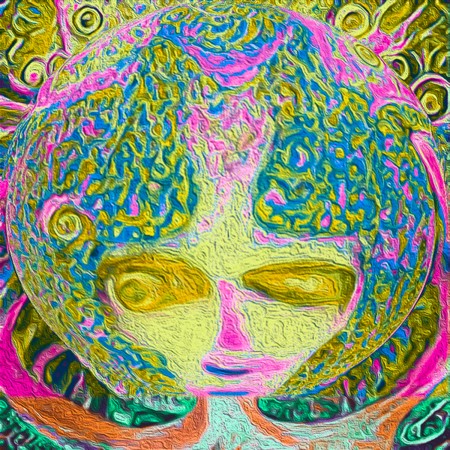 A digital illustration of a “DMT elf”, one of the entities sometimes reportedly seen by psychedelic drug users when they trip on DMT. Credit: David S. Soriano / Wikimedia Commons CC BY 4.0
A digital illustration of a “DMT elf”, one of the entities sometimes reportedly seen by psychedelic drug users when they trip on DMT. Credit: David S. Soriano / Wikimedia Commons CC BY 4.0A new study conducted at Imperial College London has revealed how psychedelic drugs alter the way the brain functions.
Scientists used detailed brain imaging data to analyze the effects of DMT (dimethyltryptamine), a potent psychedelic compound, on the brains of 20 healthy volunteers.
The researchers found that DMT affects connectivity between different areas of the brain. The study was the most detailed examination of brain activity before, during, and after the DMT experience conducted by scientists thus far.
What is DMT?
DMT is a potent psychedelic compound that can be found naturally in some plants and animals. Trace amounts of the compound can be found in the human body.
Some recreational drug users take DMT as a psychedelic and hallucinogenic drug. It can be smoked in a pipe, snorted, vaporized, or mixed into a special tea. It is illegal to produce, sell, purchase, and consume in many countries around the world.
The psychedelic compound has a long history of human use spanning thousands of years. For instance, it has been used in parts of South America for shamanic rituals. It is typically mixed with boiled plants and vines used to create a tea-like substance during religious rituals.
Users of DMT have reported varied experiences. Intense auditory and visual hallucinations are common. People who have taken the psychedelic drug have reported a range of experiences as diverse as visiting new worlds, traveling through the universe at warp speed, or conversing with extraterrestrial beings known as “DMT elves” or “machine elves”.
DMT is often referred to as the “spirit molecule” due to its association with otherworldly spiritual experiences.
Go deep with this imaging study on the effects of the psychedelic drug DMT, with insights into how psychedelics work on the brain–and what they reveal about our daily conscious experience. In PNAS: https://t.co/oG6eqBjXkK pic.twitter.com/T2iPqx5dQ0
— PNASNews (@PNASNews) March 21, 2023
Research into the impact of psychedelic drugs on the brain
According to the scientists involved, the human neuroimaging study, which was published this week in the PNAS journal, is “the most comprehensive view of the acute brain action of psychedelics to date.”
During the study, the 20 volunteers were injected with 20mg of DMT, whilst their brain activity was monitored by researchers from Imperial’s Centre for Psychedelic Research. The scientists used functional magnetic resonance imaging (fMRI) and electroencephalography (EEG) to capture detailed imaging of the brain.
The scientists found that during the immersive DMT experience, the participants experienced increased connectivity across the brain with greater communication between different areas and systems.
This was especially prevalent in areas of the brain associated with “higher-level functions” like the imagination.
“What we have seen with DMT is that activity in highly evolved areas and systems of the brain that encode especially high-level models becomes highly dysregulated under the drug, and this relates to the intense drug ‘trip’,” explained Dr. Chris Timmermann, from the Centre for Psychedelic Research at Imperial College London, and first author on the study.
Our DMT Neuroimaging paper is out now in @PNASnews https://t.co/pcsSCaDKgR
TLDR: DMT is associated with a dysregulation of the developmentally/evolutionary recent cortex and linked to reduced alpha power, increased entropy, and 5-HT2AR density.
with @RCarhartHarris et al.
🧵 pic.twitter.com/zuCin3lbwb
— Chris Timmermann (@neurodelia) March 20, 2023

 1 year ago
120
1 year ago
120











 English (US)
English (US)